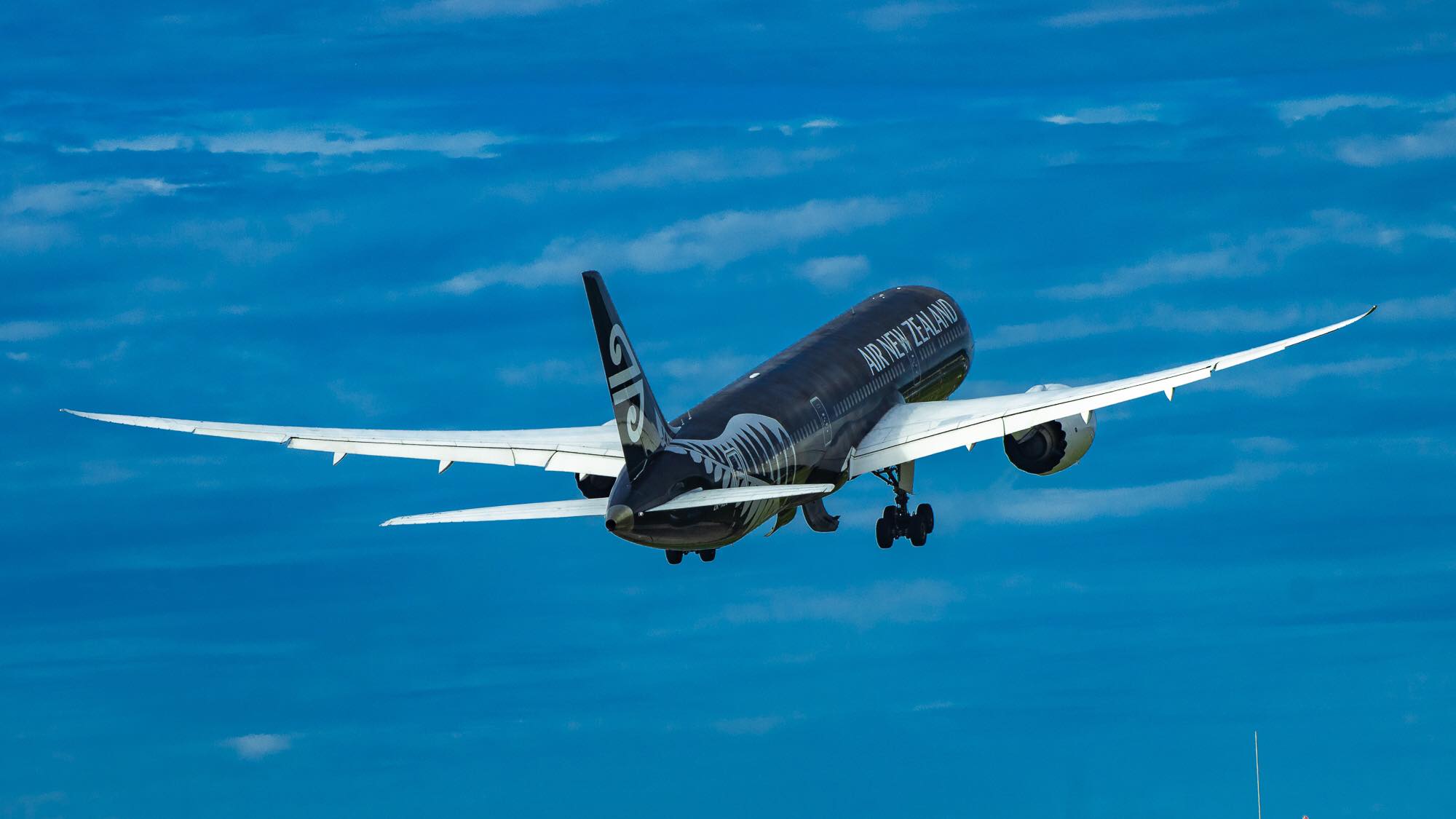Rarotonga on sale: ‘Spike’ in flight bookings amidst slow tourism season
Tuesday 16 January 2024 | Written by Joanne Holden | Published in Economy, National, Tourism

An Air New Zealand flight leaves Rarotonga for Auckland. Until midnight Friday (NZ time), travellers can snag a one-way flight from Auckland to Rarotonga for as low as $278 with Air New Zealand. The travel dates for the sale are April 1 to 10, and May 1 to June 23. DANILO REYES/ISLAND CAPTURE.CK/21071648
Airfares between Auckland and Rarotonga have dipped to under $300 as New Zealand’s flag carrier airline launches a flash sale in the midst of the Cook Islands’ slow tourism season.
While the Air New Zealand sale is for travel dates between April and June this year, Cook Islands Tourism Industry Council president Liana Scott said the announcement was having an impact on flights outside the specified period – with dates in February enjoying equally low fares.
“If it’s a good enough deal, people will make that spontaneous booking,” Scott said.
“There’re different sales throughout the year, and we see a spike in bookings as soon as a campaign comes out.”
Until midnight Friday (NZ time), travellers can snag a one-way flight from Auckland to Rarotonga for as low as $278. The travel dates for the sale are April 1 to 10, and May 1 to June 23, 2024.
Cook Islands Tourism chief executive officer Karla Eggelton said April to June were “traditionally shoulder months” of the country’s tourism season, so the sale “targets a very useful travel period for us”.
“Forward bookings from April onwards are already looking reasonably strong, and occupancies at hotels appear to be tracking ahead of pre-Covid levels,” Eggelton said.
“Airline sales are vital. They drive visitation not only for the sale period, but also for travel periods at other times of the year.
“It is a key strategy and approach to drive customers to book.”
The deal is part of Air NZ’s New Year international sale offering cheap flights to other Pacific Islands destinations as well as Australia, China, Taiwan, Indonesia, the United States, and Canada.
Despite other parts of the Pacific being part of the sale, Eggelton said her experience was Rarotonga “normally performs exceptionally well” compared to its island competitors.
Scott said Rarotonga benefited from being marketed alongside other destinations, but was often excluded from wider sales because it was a “popular destination” among Kiwis.
“Sometimes, when people are booking that special holiday and looking at the different Pacific Islands destinations – if we’re not in those campaigns and people are looking at airfare differences, we end up looking quite expensive.”
January and February were the “biggest booking months” for flights, Scott said.
“The airlines are trying to get people in the habit of booking early.”
While the Cook Islands typically experienced a slow tourism season from November until March, tourism operators had reported a “good” December and a “strong start” to January – finally beginning to “feel the dip” in the second week of the new year, Scott said.
“One property is at 80 per cent capacity, while others say they are close to empty.”
With children in Australia and New Zealand going back to school at the end of January, the “only way” to bring more visitors to the Cook Islands during its low tourism season was to grow the North American market, Scott said.
Kiwis were more likely to make a last-minute booking, while North American and European visitors tended to book their Cook Islands holidays four months to a year in advance – so flight sales tended to be done internally among airline staff, Scott said.
The general manager of the Muri Beach Club Hotel also said that she wanted to see an increase in the size and number of aircraft coming into Rarotonga from New Zealand during the high season.
“There are some days – especially for people going back – where there are three, four, five days of no availability. That means there’s no potential to fill vacancies on the ground.”
Scott said the amount of accommodation had increased, with providers who had left the tourism market during Covid-19 to focus on long-term stays starting to switch back to short-term.
Eggelton believed air capacity from Auckland was “sufficient” to handle the number of visitors Rarotonga was “normally able to secure” through to June.
“We would welcome more air capacity from July onwards,” she said.














































